В.Кондратьев Самолеты первой мировой войны
AEG C-IV/C-IVA/C-lVN/C-Vl
Двухстоечный биплан смешанной конструкции с полотняной обшивкой. Силовой набор фюзеляжа - сварная ферма из тонкостенных стальных труб. Из них же изготовлены лонжероны крыльев, межкрыльевые стойки, каркас оперения и тележка шасси. Только нервюры и передние кромки крыльев выполнялись из дерева. Капот двигателя из штампованных дюралевых листов.
Автор проекта - инженер-конструктор фирмы Альгемайне Электрицитатс Гезельшафт (AEG) Кёниг. C-IV разработан весной 1916 года. Самолет выпускался серийно на заводе фирмы AEG в Хеннигсдорфе под Берлином и на Иоханнештальском предприятии фирмы Фоккер. До конца 1917 года построено более 400 экземпляров.
AEG C-IV и его модификации широко применялись на западном фронте в качестве разведчиков и фронтовых бомбардировщиков примерно до середины 1918-го, когда были постепенно заменены "Хальберштадтами" и "Ханноверами". Кроме того отмечалось появление этих машин в северной Италии и Македонии. Помимо германских, они состояли на вооружении болгарских и турецких ВВС. Самолет отличался высокой весовой отдачей, хорошими пилотажными и эксплуатационными характеристиками.
МОДИФИКАЦИИ
C-IV - двигатель "Мерседес", 160 л.с.
C-IVA - двигатель "Аргус", 180 л.с.
C-VI - двигатель "Бенц", 200 л.с.
ВООРУЖЕНИЕ
1 турельный "Парабеллум". На некоторые экземпляры дополнительно ставили синхронный "Шпандау". C-IV и C-IVA поднимали до 100 кг бомб.
ЛЕТНО-ТЕХНИЧЕСКИЕ ХАРАКТЕРИСТИКИ
C-IV
Размах, м 13,46
Длина, м 7,15
Площадь крыла, кв.м 36,52
Сухой вес, кг 800
Взлетный вес, кг 120
Скорость максимальная, км/ч 158
Время набора высоты, м/мин 2000/12
Потолок, м 3600
А.Александров, Г.Петров Крылатые пленники России
Гигантская Электротехническая компания Германии, АЭГ, занималась также строительством аэропланов, осуществляя этот род деятельности в период с 1910 по 1919 гг. Наиболее известной ее продукцией были бомбардировщики класса Г, тогда как разведчики классов Б и Ц оставались как бы в тени, хотя количественно их выпуск преобладал. Среди 658 АЭГ'овских скаутов - вооруженных двухместных аппаратов, достойное место занимает "Ц-четвертый", появившийся весной 1916 г. За исключением деревянных нервюр его остов почти полностью состоял из стальных труб, что отличало конструкцию от аналогичных моделей фирм "Альбатрос", "Авиатик" и "Эльфауге", но одновременно требовало внедрения сварочных технологий. Специалистом в данной области слыла компания Фоккера, а потому ей настойчиво рекомендовали организовать у себя лицензированную сборку самолетов АЭГ. В июне 1917 г. 170 машин указанной марки находились на фронте; примерно через год их число сократилось до 40. Недостатком аэропланов АЭГ Ц. IV являлся их не слишком мощный - для аппарата с более чем 13-метровым размахом крыльев, двигатель "Мерседес" 160 л. с, замечательный, однако, по надежности. Как и многие другие германские модели, названная поставлялась Турции и Болгарии, и, таким образом, сфера применения на Востоке была весьма и весьма велика. Нельзя точно сказать, какими путями попал в Красную авиацию представленный здесь АЭГ Ц. IV (62), чья участь незавидна; нельзя не отметить и характерный признак АЭГ'овских машин - волнообразный излом задней кромки элеронов.
O.Thetford, P.Gray German Aircraft of the First World War (Putnam)
A.E.G. C IV
In 1916, with the realisation of the importance of aerial reconnaissance, the German Air Force decided to expand its II. Abt. and Fl. Abt. (A) Flights. Several factories undertook design and production of C type machines to enable newly created units to be raised to operational status with the minimum of delay.
The A.E.G. C IV was one of the types selected for production under this programme. Its short fuselage, combined with the considerable wingspan and the angularity of its tail surfaces, gave it a decidedly ungainly appearance and it was not an aircraft to delight the eye. Nevertheless, it performed very usefully with front-line units. The exact number built is not on record, but a total of 658 C type A.E.G.s was produced, and it is known that the C IV predominated.
With the exception of the wooden wing ribs, the A.E.G. C IV was built almost completely of steel tube of varying gauge and diameter. In this respect it differed widely from its Albatros, Aviatik and L.V.G. contemporaries. By virtue of its experience of welded construction, the Fokker factory at Schwerin was ordered to build the C IV under licence, a situation which the egotistical Anthony Fokker personally found extremely galling.
Power was provided by the 160 h.p. Mercedes D III motor, which, splendid engine though it was, was a far from adequate installation for an aircraft of this wingspan. The bulbous nose panelling surrounding it paid scant heed to the demands of streamlining, and a large rectangular Daimler Mercedes radiator encumbered the underside of the centre-section, being mounted directly under the main spar. A rhino-horn exhaust manifold of formidable proportions ejected vertically over the top wing. The fuselage basically a braced box-girder; longerons and transverse members were of 16 mm. diameter steel tube, except for the three rearmost stations, which were of 20 mm. tube, welded together with sheet steel lugs in the corners for the attachment of the bracing cables. A Ministry of Munitions report on a captured example stressed the quality of the welding. That considerable attention was paid to structural detail, if not to streamlining, is evidenced by the fact that at certain points in the fuselage where bracing wires lay in the same plane as cross members, such members were diagonally drilled and a small-diameter tube welded in place for the passage of the wire.
The wings were built on two steel tube spars some 40 mm. in diameter, the wooden ribs being interspaced with false ribs extending from the wooden, semicircular leading-edge member back to the front spar. The aileron wires ran through a steel tube in the lower wing mounted behind the front spar, which served as an additional structural member. The trailing edge was a simple wire member which imparted a slightly scalloped profile, characteristic of so many German aircraft. The ailerons themselves were also of steel tube frame, unbalanced, and those of the production aircraft had a distinctive "bite" out of the trailing edge unlike those of the prototype aircraft, which were parallel. With its shallow cut-out, the centre-section was supported on six steel struts in order to amply sustain the bulky radiator and gravity fuel tank which were fixed to it. The wings were rigged with a slight degree of sweep, not apparent from photographs, 1° 10' in the upper wing and 1° 5' in the lower. All struts were of streamlined steel tube and bracing was by stranded cable wires.
Again in all tail surfaces, steel tube was the constructional material; they were plain unbalanced surfaces of uniform "flat plate" section. A unique feature was the adjustable tail plane incidence. This could be pre-set to one of three different positions, according to the trim desired, and to permit this the tailplane bracing struts were ingeniously adjustable for length by virtue of a shackle end which screwed in, or out, of the top of the actual steel strut tube.
Streamlined steel tube (70 x 35 mm.) formed the vees of the undercarriage chassis, while the shock absorbers were of spiral steel springs. The tail skid was an extremely robust affair, welded from sheet steel, mounted on the base of the stern post, and internally sprung by four spiral springs in direct tension.
A total of 170 A.E.G. two-seaters were serving on all Fronts in June 1917, and 40 were still operational as late as August 1918.
TECHNICAL DATA
Description: Two-seat reconnaissance or artillery observation.
Manufacturers:
Allgemeine Elektrizitiits Gesellschaft (A.E.G.).
Fokker Flugzeugwerke G.m.b.H. Schwerin (Fok.).
Power Plant: 160 h.p. Mercedes D III 6 cylinder in-line water cooled.
Dimensions: Span, 13460 m. (44 ft. 2 in.). Length, 7150 m. (23 ft. 5 1/2 in.). Height, 3.350 m. (10 ft. 11 7/8 in.). Wing area, 39 sq.m. (421.2 sq.ft.).
Heights: Empty, 800 kg. (1,760 lb.). Loaded, 1,120 kg. (2,464 lb.).
Performance: Maximum speed, 158 km.hr. (98.75 m.p.h.). Initial climb, 1,000 m. (3,280 ft.) in 6 min. Ceiling, 5,000 m. (16,400 ft.). Duration, 4 hr.
Armament: Two machine-guns. One fixed Spandau for pilot and one free-firing Parabellum for observer.
A.E.G. C V
Designed to utilise the geared straight-eight-cylinder 220 h.p. Mercedes engine, the C V made its debut in February 1916. Only one machine was built, as the Albatros C V proved much superior. Engine, 220 h.p. Mercedes D IV. Span, 13.20 m. (43 ft. 3 3/4 in.). Length, 7.6 m. (24 ft. 11 1/4 in.). Area, 41.5 sq.m. (448 sq.ft.). Weights: Empty, 900 kg. (1,980 lb.). Loaded, 1,432 kg. (3,150 lb). Speed, 165 km.hr. (103.12 m.p.h.). Climb, 1,000 m. (3,280 ft.) in 5 min.
A.Weyl Fokker: The Creative Years (Putnam)
After the Fok. D.IV had been discarded from service on the Western Front, priority for deliveries of the 160-h.p. Mercedes D.IIIa engine was given to the Albatros works and later to the Pfalz concern. This was so, not to discriminate against Fokker, but simply because the Albatros and Pfalz fighters were in great demand for the hard-pressed Western Front, especially in the Somme. Aisne and Flanders areas. Fokker’s complaint about delays in the supply of engines was understandable, but was hardly justified from the Service point of view.
To add to Fokker’s displeasure, he was directed to build, under licence, 400 A.E.G. C.IV two-seaters that were required for instructional purposes. This happened just at the time when he had no-one to design new types for him, but the contract at least had the virtue of keeping the Schwerin factory occupied. Production of the A.E.G. two-seaters was thought to be particularly appropriate to the Fokker works, for the aircraft had welded steel-tube fuselages; the wings had tubular steel spars but wooden ribs. Moreover, it was hoped that Fokker’s organization would profit from the experience of producing a carefully designed aircraft.
Fokker complained bitterly that the A.E.G. C.IV was so immensely complicated that he could not make a penny of profit from the order, large though it was. Hauptmann Dr. Hoff, whom he approached in the matter, advised him to study the soundness of the A.E.G.’s design.
The licence-production at Schwerin was supervised by Dr. Koner, the new expert on production control and materials. The first Fokker-built A.E.G. C.IV (Fok) No. 255/17, was accepted after a flight test at Schwerin on August 1, 1917, and was submitted for a type test on August 25, 1917.
J.Herris AEG Aircraft of WWI (A Centennial Perspective on Great War Airplanes 16)
AEG C.IV
The AEG C.II had been insufficiently robust for front-line service and could only be used for training, and the C.III did not have the performance of the Roland C.II. To develop a successful C-type AEG based its C.IV design on the results of the engineering tests done on the C.IIa through C.IIe development prototypes. Attention was also given to speeding production through simplifying the design, rationalizing assembly methods, and building welding jigs to enable production by semi-skilled labor. Outwardly similar to the previous C.I and C.II, the C.IV embodied many detailed structural and aerodynamic improvements and a new wing design that eliminated the unnecessary wing-folding mechanism. Due to the unfortunate experience of the C.II, the C.IV airframe was strengthened and used structural joints machines from solid billets instead of built-up from welded sections. As a result the C.IV had improved strength and durability compared to any of its AEG predecessors.
Powered by a 160 hp Mercedes D.III engine, the C.IV prototype first flew in March 1916. Idflieg awarded AEG a production contract for 100 C.IV aircraft in March 1916 pending successful completion of the static load tests. Unfortunately, a wing spar failed load testing in June and Idflieg refused to accept the AEG C.IV. Idflieg then suggested that AEG build the all-wood Rumpler C.IV under license, but this was clearly not suited for the AEG production methods geared to metal-framed aircraft and the proposal was quickly dropped. In the meantime the AEG C.IV had managed to pass its load tests and was approved for service, the first aircraft reaching the front in October 1916.
At the front the AEG C.IV soon gained a reputation for reliability and speed, but was not an easy aircraft to fly compared to the well-liked Albatros C.III and DFW C.V and some units did not appreciate it. In addition to reconnaissance it also had a useful bombing ability. Never famous like the shapely Roland C.II nor the exceptional Rumpler C.IV, the AEG C.IV was a solid, reliable aircraft that was capable enough to be developed into the production AEG N.I and AEG J.I and J.II.
Its robust metal airframe recommended it for service in the Middle-East where weather and temperature extremes were typical, and C.IV aircraft modified for the heat with larger radiators were delivered to both Turkish units and German units serving in the area. However, the aircraft's structure required welding equipment for even minor repairs, a factor that had been inexplicably overlooked when units using the type quickly found a nearly complete absence of the needed equipment in the area. This small but critical problem seriously reduced C.IV serviceability in the theater.
In January 1918 work was in progress to install a flexible 2cm Becker cannon in a C.IV modified with a larger observer's gun ring. The gun ring operated smoothly but the gunner's position was too cramped for proper loading and aiming of the cannon, and the project was cancelled in April.
AEG C.IV v.R.
AEG lengthened the C.IV fuselage to improve its flying and landing qualities; the modified aircraft was designated the AEG C.IV v.R. (verlangerter Rumpf - lengthened fuselage). This modification is not mentioned in any existing Idflieg records, although the AEG J.II was given a longer fuselage for the same reasons, as were some AEG J.I aircraft. To what extent the long fuselage was incorporated in late production aircraft is unknown.
AEG C.IV(Fok)
By the end of 1916 the Fokker company badly needed a suitable aircraft to manufacture because its own designs had been restricted to training service due to poor design and quality control. To maintain production output and the existing workforce, Idflieg contracted for license production of the AEG C.IV for training service. Fokker was the only other German company with the required welding skills for airframes, and in January 1917 received an order for 200 trainers as the AEG C.IV(Fok). Production deliveries began in July 1917 and the first production aircraft was type-tested in August 1917; deliveries were completed in December 1917.
AEG C.IVa(Fok)
Idflieg ordered 200 AEG C.IVa(Fok) trainers from Fokker in June 1917. The C.IVa(Fok) differed from the C.IV(Fok) in having a 180 hp Argus As.III engine in place of the 160 hp Mercedes D.III; the Mercedes was needed for Albatros and Pfalz fighter production and the Argus was readily available. Fokker delivered 100 of these aircraft between November 1917 and March 1918. However, the remaining 100 aircraft were cancelled to enable Fokker to use the production capacity for its new D.VII fighter.
AEG C.V
When a new engine became available it was common for Idflieg to order new prototypes from several manufacturers; this gave more experience with the new engine and enabled Idflieg to choose the best aircraft for production. When the new 220 hp Mercedes D.IV straight-eight became available Idflieg ordered new C-types powered by this engine from AEG, Albatros, and LVG. The resulting AEG C.V strongly resembled the AEG C.IV that was designed in parallel. Interestingly, the C.V was completed in February 1916, one month before the C.IV. Having a heavier engine, the C.V was slightly larger than the C.IV and was slightly faster. The competing Albatros C.V and LVG C.IV apparently had better performance or flying qualities than the AEG C.V because they were both ordered into production while the AEG C.V was not. Production of the Mercedes D.IV was limited and the engines allocated to AEG were used in the AEG G.III twin-engine bomber.
AEG C.VI
Apparently the AEG C.VI was an un-built project because there is no information about it in existing German records and no photographs exist of an AEG C.VI.
AEG C-Type Production Orders
Serial Numbers Qty Order Date & Notes
AEG C.IV (495 Total)
C.1024-1123/16 100 March 1916
C.6575-6674/16 100 October 1916 (note 1)
C.1700-1799/17 100 April 1917
C.4800-4899/17 100 (May) 1917
C.7052-7126/17 75 July 1917 (note 2)
? 8 December 1917 (note 3)
C.1100-1111/18 12 February 1918 (note 3)
AEG C.IV(Fok) (200 Total)
C.240-439/17 200 January 1917
AEG C.IVa(Fok) ( 100 Total)
C.6500-6699/17 100 January 1917 (note 4)
Notes: 1. Initially order was for 100 Rumpler C.IV(AEG) 2. 25 of these for Turkey, 50 for Germany 3. Special equipment for tropics 4. 200 ordered but only 100 built
AEG C-Type Specifications
C.I C.II C.III C.IV C.IV(Fok)
Engine 150 hp Benz Bz.III 150 hp Benz Bz.III 150 hp Benz Bz.III 160 hp Mercedes D.III 160 hp Mercedes D.III
Span Upper 13.07 m 11.95 m 12.00 m 13.00 m 12.99 m
Span Lower 11.83 m 11.45 m 11.30 m 12.50 m 12.36 m
Chord Upper 1.60 m 1.85 m 1.60 m 1.65 m 1.65 m
Chord Lower 1.60 m 1.85 m 1.60 m 1.65 m 1.65 m
Gap 1.95 m 1.80 m 1.40 m 1.95 m 1.95 m
Wing Area 36.0 m2 39.0 m2 33.90 m2 39.0 m2 -
Length 7.95 m 7.09 m 6.50 m 7.20 m 7.22 m
Track 2.30 m 2.15 m 2.15 m 2.15 m 2.16 m
Empty Weight 710 kg 680 kg 687 kg 800 kg 901 kg
Loaded Weight 1,125 kg 1,200 kg 1,232 kg 1,320 kg 1,414 kg
Maximum Speed 130 kmh 138 kmh 145 kmh 158 kmh -
Climb, 1000m 11 min. 8 min. - 6 min. 4.8 min.
Climb, 2000m 25 min. 18 min. - 12.5 min. 12.1 min.
Climb, 3000m 55 min. 41 min. - 23 min. 21.9 min.
Climb, 4000m - - - 38 min. 35.4 min.
Armament 1 flexible machine gun, small bombs 1 flexible machine gun, 4x10 kg bombs 1 flexible machine gun 1 fixed & 1 flexible machine gun 1 flexible machine gun
AEG C-Type Specifications
C.V C.VII C.VIII C.VIIIDr
Engine 220 hp Mercedes D.IV 160 hp Mercedes D.III 160 hp Mercedes D.III 160 hp Mercedes D.III
Span Upper 13.26 m 11.10m 9.50 m 11.20 m
Span Lower 12.45 m 10.05 m 9.10m 10.40 m
Chord Upper 1.75 m 1.55 m 1.74 m 1.45 m
Chord Lower 1.75 m 1.30 m 1.33 m 0.82 m
Gap 2.07 m 1.85 m 1.60 m 1.00 m
Wing Area 41.5 m2 26.0 m2 22.67 m2 31.0 m2
Length 7.60 m 6.20 m 6.20 m 6.90 m
Track 2.30 m 2.00 m 2.10 m 1.90 m
Empty Weight 900 kg 758 kg 800 kg 800 kg
Loaded Weight 1,432 kg 1,118 kg 1,160 kg 1,160 kg
Maximum Speed 165 kmh 175 kmh 170-190 kmh 158 kmh
Climb, 1000m 7 min. 4 min. 3.8 min. 3.8 min.
Climb, 2000m 13 min. - - -
Climb, 3000m 22 min. - - -
Climb, 4000m 37.5 min. - - -
Armament 1 fixed & 1 flexible machine gun 1 fixed & 1 flexible machine gun 1 fixed & 1 flexible machine gun 1 fixed & 1 flexible machine gun
Журнал Flight
Flight, July 12, 1917.
SOME 1917 TYPE GERMAN AEROPLANES.
The A.E.G. (Type C. IV).
The Allgemeine Elektrizitats Gesellschaft build two types of machines - one a twin-engined biplane and the other an ordinary two-seater biplane with single engine. The wings of the single-engined machine, which, like all the A.E.G. machines, is built entirely of steel tube, are of 42 ft. 6 ins. span, so that the machine is a fairly large one. The wings are set at a small dihedral angle and also slope back slightly. There are two pairs of struts on each side, and the machine is remarkable for its exceptionally large gap between the planes.
The wings are built entirely of steel tube, with the exception of the leading edge and intermediate ribs. The ailerons, it will be seen from the sketch, are of rather peculiar shape, and form on that account a good guide for purposes of identification.
Like the rest of the machine, the body is built of steel tube, and is flat-sided except in front, where it is covered with three-ply and slightly rounded. The engine, a 175 h.p. Mercedes, is mounted on two longitudinal bearers of square section steel tube. The petrol service tank and radiator are incorporated with the centre section of the top plane, which is straight. The armament consists of two machine guns, the front one fixed and synchronised, the rear one on a gun ring, and of four bombs placed on top of one another inside the body, to the right of the passenger.
 |
J.Herris - AEG Aircraft of WWI /Centennial Perspective/ (16)
|
| AEG C.IV prototype
|
 |
J.Herris - AEG Aircraft of WWI /Centennial Perspective/ (16)
|
| AEG C.IV C.6590/16
|
 |
J.Herris - Development of German Warplanes in WWI /Centennial Perspective/ (1)
|
| AEG C.IV C.6623/16. An average airplane, the AEG C.IV nevertheless was the ancestor of the AEG N.I and the AEG J.I and J.II. This one is in standard factory sprayed camouflage finish with the black unit marking of Schutzstaffel 6 in 1916.
|
 |
J.Herris - AEG Aircraft of WWI /Centennial Perspective/ (16)
|
| AEG C.IV C.6674/16 of Schusta 27
|
 |
J.Herris - AEG Aircraft of WWI /Centennial Perspective/ (16)
|
| AEG C.IV C.1748/17
|
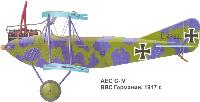 |
В.Кондратьев - Самолеты первой мировой войны
|
| AEG C-IV ВВС Германии, 1917г.
|
 |
J.Herris - AEG Aircraft of WWI /Centennial Perspective/ (16)
|
| AEG C.IV C.4871/17 of FAA 303 based in Palestine
|
 |
В.Обухович, А.Никифоров - Самолеты Первой Мировой войны
|
| AEG C IV
|
 |
J.Herris - AEG Aircraft of WWI /Centennial Perspective/ (16)
|
| AEG C.IV(Fok) trainer
|
 |
J.Herris - AEG Aircraft of WWI /Centennial Perspective/ (16)
|
| AEG C.IV(Fok) trainer in postwar Netherlands service
|
 |
J.Herris - AEG Aircraft of WWI /Centennial Perspective/ (16)
|
| AEG C.IV in Turkish markings
|
 |
J.Herris - AEG Aircraft of WWI /Centennial Perspective/ (16)
|
| AEG C.IV v.R C.7123/17 in postwar Polish service
|
 |
J.Herris - AEG Aircraft of WWI /Centennial Perspective/ (16)
|
| The AEG C.IV prototype (second version) benefited from an improved steel-tube structure compared to the C.II.
|
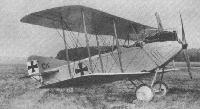 |
В.Кондратьев - Самолеты первой мировой войны
|
| AEG C-IV
|
 |
J.Herris - AEG Aircraft of WWI /Centennial Perspective/ (16)
|
| AEG C.IV prototype (second version) in April 1916 at the Idflieg hangar at Adlershof.
|
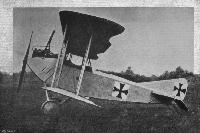 |
Журнал - Flight за 1917 г.
|
| A captured German (A.E.G.) biplane with 175 h.p. Mercedes engine. Note the peculiar shape of the ailerons.
|
 |
O.Thetford, P.Gray - German Aircraft of the First World War /Putnam/
|
| One of the Fokker-built A.E.G. C.IV two-seaters.
|
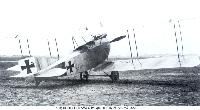 |
Сайт - Pilots-and-planes /WWW/
|
| Early model of the AEG C.IV type used by Fl.-Abt.(A) 252w.
|
 |
J.Herris - AEG Aircraft of WWI /Centennial Perspective/ (16)
|
| AEG C.IV 1103/16 from the first C.IV production batch was captured January 23, 1917 and put on display.
|
 |
J.Herris - AEG Aircraft of WWI /Centennial Perspective/ (16)
|
| AEG C.IV 6590/16 with checkerboard marking gets ready for take-off.
|
 |
O.Thetford, P.Gray - German Aircraft of the First World War /Putnam/
|
| AEG C.IV 6648/16 of the second production batch with tactical number '5' served with Flieger Abteilung(A) 224, a Wurttemberg unit.
|
 |
J.Herris - AEG Aircraft of WWI /Centennial Perspective/ (16)
|
| AEG C.IV 1715/17 is run up before its next mission while the aircrew and ground crew pose for a team photograph. The C.IV, powered by the 160 hp Mercedes D.III, was the first AEG C-type to have a synchronized gun for the pilot.
|
 |
J.Herris - AEG Aircraft of WWI /Centennial Perspective/ (16)
|
| A crewman strikes a jaunty pose by AEG C.IV 1748/17 of the third production batch. The two-color sprayed camouflage typical of AEG practice at the time shows up nicely. Powered by the same 160 hp Mercedes D.III six-cylinder engine used in the Albatros fighters, the AEG C.IV was a competent early C-type whose main claim to fame was its welded steel tube construction. However, undistinguished as it was, it served as the basis for both the AEG J-types and the AEG N.I night bomber.
|
 |
J.Herris - AEG Aircraft of WWI /Centennial Perspective/ (16)
|
| AEG C.IV 1762/17 of the third production batch.
|
 |
J.Herris - AEG Aircraft of WWI /Centennial Perspective/ (16)
|
| Hptm. Kieser in front of AEG C.IV 4871/17 serving with Flieger Abteilung 303 in Palestine.
|
 |
J.Herris - AEG Aircraft of WWI /Centennial Perspective/ (16)
|
| AEG C.IV 4886/17 of Flieger Abteilung 303 in Palestine being moved by unit personnel.
|
 |
J.Herris - AEG Aircraft of WWI /Centennial Perspective/ (16)
|
| AEG C.IV 6614/17 of the second production batch poses for its portrait.
|
 |
J.Herris - AEG Aircraft of WWI /Centennial Perspective/ (16)
|
| AEG C.IV with the typical AEG two-color sprayed camouflage.
|
 |
J.Herris - AEG Aircraft of WWI /Centennial Perspective/ (16)
|
| Sanke card 1048 featured the AEG C.IV(Fok) as shown by the Fokker-style streaked camouflage.
|
 |
J.Herris - AEG Aircraft of WWI /Centennial Perspective/ (16)
|
| Fokker-built AEG C.IV(Fok) 277/17 was assigned to the Flieger Beobachter Schule Coln on Sep. 28, 1917 and landed in Heithuizen, the Netherlands, on Dec. 18,1917. After repair and addition of the Dutch orange circle insignia it was assigned Dutch military serial AEG 403 and served in the Netherlands. The streaked finish of the Fokker-built C.IVs was very distinctive.
|
 |
J.Herris - Roland Aircraft of WWI /Centennial Perspective/ (9)
|
| A portrait of Flieger-Abteilung (Artillerie) 292 (Artillery cooperation aviation unit 292) with two Roland C.II aircraft in the lineup behind the aircrew. The aircraft on the left is an AEG C.IV, and in the center is an LVG C.IV. Like the Roland C.II, the AEG C.IV used the 160 hp Mercedes D.III.The LVG used the rare 220 hp Mercedes D.IV engine, an 8-cylinder engine created by adding two more cylinders to the 6-cylinder Mercedes D.III. Most German two-seater units were equipped with a variety of types optimized for the different roles they performed.
|
 |
J.Herris - LVG Aircraft of WWI. Volume 2: Types C.II-C.V /Centennial Perspective/ (35)
|
| German two-seater units often had a variety of different aircraft types for different missions, and FAA 292b's aircraft line up is shown here. From left to right the aircraft are AEG C.IV, Roland C.II, LVG C.IV, another Roland C.II, a DFW C.V, and an Albatros C.V. This photo was taken at the same time as the other FAA 292b photos above. (Bruno Schmaling)
|
 |
J.Herris - AEG Aircraft of WWI /Centennial Perspective/ (16)
|
| AEG C.IV with aircrew, one of whom is distinctly taller than the others, serving with FA304b in Palestine.
|
 |
J.Herris - AEG Aircraft of WWI /Centennial Perspective/ (16)
|
| Vzfw. Raetsch and Offz. Schulz in front of their C.IV.
|
 |
J.Herris - AEG Aircraft of WWI /Centennial Perspective/ (16)
|
| Lts. Milenz and Spiegel with an AEG C.IV of Flieger Abteilung 303 in Palestine.
|
 |
J.Herris - AEG Aircraft of WWI /Centennial Perspective/ (16)
|
| An AEG C.IV crew ready for their next mission photographed before takeoff. The large, unprotected radiator was vulnerable to ground fire and created significant drag. If it leaked due to damage the hot water spraying over the crew must have been very uncomfortable.
|
 |
J.Herris - AEG Aircraft of WWI /Centennial Perspective/ (16)
|
| An AEG C.IV photographed in flight displays the lines typical of most AEG C-types.
|
 |
J.Herris - AEG Aircraft of WWI /Centennial Perspective/ (16)
|
| AEG C.IV in Turkish markings at right and an Albatros C.III in Turkish markings at left.
|
 |
J.Herris - AEG Aircraft of WWI /Centennial Perspective/ (16)
|
AEG C.IV 7123/17 v.R. (verlangerter Rumpf = lengthened fuselage) serving postwar with the Polish airforce. Large serial numbers were used with training aircraft.
The AEG C.IV differed from the other German C-types in a number of ways, especially its steel tube construction instead of typical wooden structure which made for a light, yet strong airframe. Access to the engine was through vertically-hinged clamshell cowling panels, removed in this view of an example in Polish postwar service.
|
 |
J.Herris - AEG Aircraft of WWI /Centennial Perspective/ (16)
|
| AEG C.IV with engine cowling panels removed shows details of the engine installation.
|
 |
J.Herris - AEG Aircraft of WWI /Centennial Perspective/ (16)
|
|
|
 |
J.Herris - AEG Aircraft of WWI /Centennial Perspective/ (16)
|
|
|
 |
J.Herris - AEG Aircraft of WWI /Centennial Perspective/ (16)
|
| Additional structural details of the AEG C.IV(Fok) at the Fokker factory. Fokker-built AEG C.IVa aircraft were intended for training use; when Fokker received substantial orders for the Fokker D.VII fighter he requested the remaining AEG C.IVa(Fok) aircraft on the order be cancelled to free production capacity for the D.VII and this was granted.
|
 |
J.Herris - AEG Aircraft of WWI /Centennial Perspective/ (16)
|
|
|
 |
J.Herris - AEG Aircraft of WWI /Centennial Perspective/ (16)
|
| Undercarriage and structural details of the AEG C.IV(Fok).
|
 |
J.Herris - AEG Aircraft of WWI /Centennial Perspective/ (16)
|
| Structural details of the AEG C.IV(Fok) at the Fokker factory. Fokker and AEG were the only two German aircraft manufacturers that used welded steel tube structures. When Fokker's designs fell behind and were not being produced for the front, Fokker was given an order for license-built AEG C.IV aircraft to sustain the factory.
|
 |
J.Herris - AEG Aircraft of WWI /Centennial Perspective/ (16)
|
| Wing rib and aileron covering details of the AEG C.IV(Fok).
|
 |
J.Herris - AEG Aircraft of WWI /Centennial Perspective/ (16)
|
| AEG C.IV(Fok) aircraft under construction in the Fokker factory.
|
 |
J.Herris - AEG Aircraft of WWI /Centennial Perspective/ (16)
|
| AEG C.IV(Fok) airframes stored at the Fokker factory waiting for engines to be delivered. The streaked finish typical of Fokker F.I and Dr.I triplanes built in parallel with this production order clearly identifies these aircraft as built by Fokker.
|
 |
J.Herris - AEG Aircraft of WWI /Centennial Perspective/ (16)
|
| Despite its additional 60 hp, the AEG C.V was only slightly faster than the C.IV designed in parallel.
|
 |
В.Кондратьев - Самолеты первой мировой войны
|
| Не попавший на фронт малосерийный разведчик AEG C-V
|
 |
J.Herris - AEG Aircraft of WWI /Centennial Perspective/ (16)
|
| A.E.G. C V
|
 |
А.Александров, Г.Петров - Крылатые пленники России
|
| (КПР 62)
|
 |
J.Herris - AEG Aircraft of WWI /Centennial Perspective/ (16)
|
| AEG C.IV 1113/16 of the first production batch has suffered a landing accident.
|
 |
J.Herris - AEG Aircraft of WWI /Centennial Perspective/ (16)
|
| AEG C.IV 1724/17 after a landing accident.The serial number painted in large numbers on the fuselage is unusual.
|
 |
J.Herris - AEG Aircraft of WWI /Centennial Perspective/ (16)
|
| Landing accidents were common during WWI due to the rough fields and sensitivity of the light aircraft to gusts of wind while landing. These two AEG C.IV aircraft demonstrate some of the results. Above is C.IV 6602/16 of the second production batch.
|
 |
J.Herris - AEG Aircraft of WWI /Centennial Perspective/ (16)
|
| AEG C.IV in Turkish markings after a landing accident. Many AEG C.IV aircraft were sent to the Middle East due to their robust steel-tube airframes, which absorbed the shock of this crash. Apparently no thought was given to the almost total lack of welding equipment in that remote, primitive theater because C.IV serviceability was greatly hampered by its absence. Even minor structural damage was very difficult to repair due to the scarcity of welding equipment.
|
 |
J.Herris - AEG Aircraft of WWI /Centennial Perspective/ (16)
|
|
|
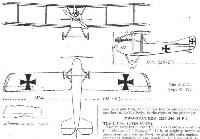 |
Журнал - Flight за 1917 г.
|
|
|
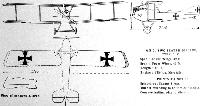 |
Jane's All The World Aircraft 1919 /Jane's/
|
| A.E.G. two-seater biplane, type C.IV
|
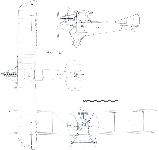 |
Сайт - Pilots-and-planes /WWW/
|
|
|
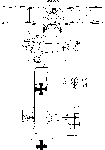 |
В.Кондратьев - Самолеты первой мировой войны
|
| AEG C-IV
|































































